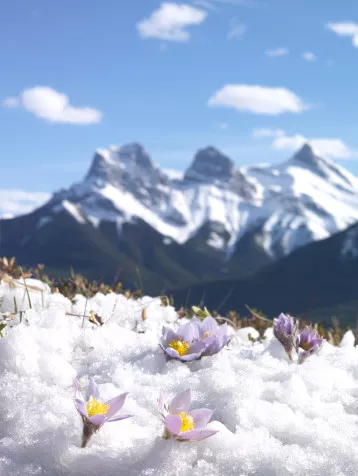1. Summary of Banff Climate
This article explores the unique climate conditions of Banff, a stunning destination in the Canadian Rockies. You’ll learn about the distinct seasons, average temperatures, and essential tips for what to wear during your visit.
2. Understanding Banff’s Climate
Located in the Canadian Rocky Mountain range, “Banff” encompasses both the town of Banff and Banff National Park. The climate in Banff is generally more moderate compared to many popular destinations in Canada, such as Montreal, Toronto, Winnipeg, or Edmonton. However, understanding the variability of weather conditions in this area is crucial, as it can change swiftly from moment to moment and place to place. Therefore, layering your clothing is essential for adapting to fluctuating conditions throughout the year.
3. Banff Climate Fast Facts
- July is the hottest month.
- June boasts the most hours of daylight and rainfall.
- Warm chinook winds can bring spring or summer temperatures from January to March.
- UV rating is high year-round; therefore, hats and sunscreen are advisable to prevent sunburn.
- December typically sees the highest snowfall.
- Snow can appear at any time of the year, especially at high elevations.
- Wind chill can create a significant difference in perceived temperature, making it feel much colder.
4. Banff’s Seasonal Variations
Summer (July – August)
- Low humidity, warm temperatures, and extended daylight hours characterize this season.
- Average daytime highs are around 21°C (70°F).
- Night-time lows can dip to approximately 7°C (45°F).
Autumn (September – October)
- This season experiences diminishing daylight hours with pleasantly warm days and cooling evening winds.
- Temperatures gradually drop, but daytime highs remain comfortably above freezing while night-time lows hover around freezing.
Winter (November – March)
- While snow can occur year-round, winter snowfall typically begins in November.
- The average winter temperature is around -12°C (6°F); however, it’s common to experience prolonged cold snaps in December or January with temperatures plummeting to -30°C (-22°F).
- Banff and surrounding areas can experience warm chinook winds during winter, bringing brief periods of milder, spring-like temperatures that may last for days or weeks.
Spring (April – June)
- Rainfall begins in April, along with rising temperatures that gradually melt the winter snow in the valleys. However, snow cover remains in high mountain passes and trails until mid-summer.
- June is the rainiest month in Banff; this, combined with snowmelt, causes rivers to swell to their banks.





